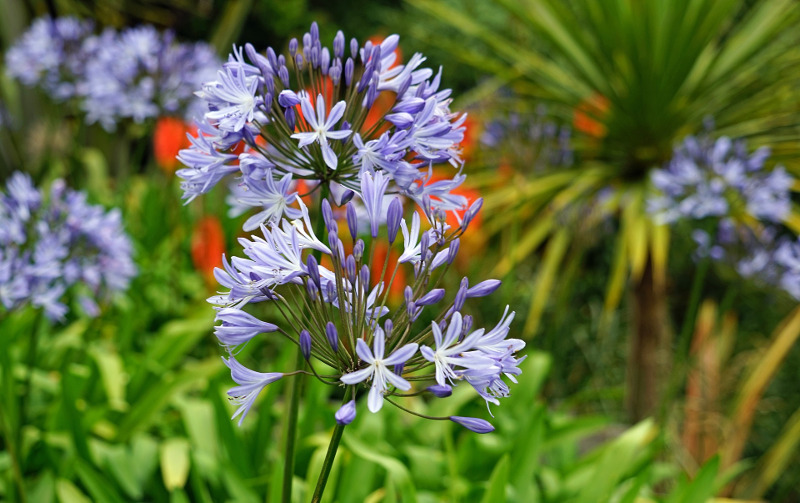Unleashing the Secret to Effective Agapanthus Cultivation: Idea for a Flourishing Yard
In the world of gardening, growing agapanthus effectively requires a critical approach that incorporates various aspects of plant care. By comprehending the subtleties of agapanthus growing, one can create an atmosphere where these plants flourish and flower abundantly.
Growing Agapanthus: Best Practices
When growing Agapanthus, appropriate soil preparation is necessary for making sure effective growth and development of these attractive blossoms. Agapanthus, commonly called Lily of the Nile or African lily, thrives in well-draining soil with a somewhat acidic to neutral pH level - Agapanthus. Prior to planting, it is vital to amend heavy clay soils with raw material such as garden compost or peat moss to improve drain and provide vital nutrients for the plants
To grow Agapanthus, pick a place that receives complete sunshine to partial shade, as this will promote healthy development and bountiful flowering. Dig a hole two times the diameter of the plant's root round and place the Agapanthus at the very same depth it was previously growing. Carefully backfill the hole with soil, pressing down strongly to remove any type of air pockets around the origins.
Water the newly planted Agapanthus completely and proceed to maintain the dirt equally damp, especially throughout the plant's active expanding period. Agapanthus. Applying a balanced fertilizer once a month can even more support the plant's growth and blooming. By adhering to these ideal techniques for planting Agapanthus, you can develop a sensational display screen of these captivating flowers in your yard
Perfect Dirt Conditions for Agapanthus
For optimum development and growing success of Agapanthus plants, making sure the soil problems are ideal is important. Agapanthus likes soil that is rich in nutrients, so including a balanced plant food throughout the growing period can advertise healthy development and dynamic blossoms.

Watering and Feeding Tips
To make certain healthy and balanced growth and vivid blooms, appropriate watering and fertilizing techniques are necessary for successful Agapanthus growing. Agapanthus plants take advantage of normal watering, specifically throughout the growing period. It is advised to water deeply once a week, guaranteeing the soil is wet yet not saturated. During warm weather condition or in pots, even more constant watering may be necessary to stop the soil from drying out totally.
When it pertains to fertilizing Agapanthus, a balanced fertilizer with equivalent parts nitrogen, phosphorus, and potassium can be applied in the springtime to advertise healthy growth and blooming. Slow-release fertilizers are perfect for providing nutrients gradually over an extensive duration. Stay clear of over-fertilizing, as this can bring about extreme vegetation growth at the expenditure of flowers.
Additionally, including natural matter like compost right into the dirt can improve nutrient degrees and boost soil framework, aiding in the general wellness of the Agapanthus plants. By complying with these watering and fertilizing tips, gardeners can guarantee their Agapanthus plants thrive and generate magnificent screens of blossoms.
Trimming and Deadheading Methods
Proper pruning and deadheading this hyperlink strategies play an important role in maintaining the wellness and appearances of Agapanthus plants, matching the important methods of watering and fertilizing for successful farming. Trimming Agapanthus includes removing spent blossom heads, yellowing or dead fallen leaves, and total shaping of the plant to promote better development. Deadheading, the procedure of getting rid of faded blossoms, not just enhances the plant's look yet likewise urges further flowering.
When deadheading Agapanthus, it is suggested to trim off the blossom stem at the base making use of sharp, clean shears. This procedure reroutes the plant's energy from seed production back right into root and foliage growth, promoting a healthier and much more robust plant. Routine deadheading can extend the growing duration of Agapanthus and prevent self-seeding, which can bring about overcrowding.
In terms of pruning, Agapanthus typically gain from a light trim after blossoming to clean the plant and motivate fresh development. Cutting down the spent blossom stems and getting rid of any kind of dead or broken vegetation assists preserve the plant's vigor and general look. Nonetheless, it is important to stay clear of reducing into the crown of the plant, as this can damage its health and wellness.

Protecting Agapanthus From Vermins and Diseases
Carrying out effective pest and condition administration techniques is essential to securing the health and vigor of Agapanthus plants in cultivation. One usual bug that influences Agapanthus is the Agapanthus borer, a caterpillar that passages into the plant, triggering damages to the fallen leaves and blossoms.
In enhancement to insects, Agapanthus are vulnerable to illness such as origin Discover More Here rot and fungal leaf spots. By staying attentive and dealing with pest and condition issues quickly, garden enthusiasts can help their Agapanthus prosper and prosper.

Conclusion
In conclusion, effective farming of agapanthus calls for proper growing strategies, excellent soil problems, sufficient watering and fertilizing, routine trimming and deadheading, and defense from insects and conditions. By complying with these tricks and tips, gardeners can make sure a prospering garden loaded with stunning agapanthus blossoms. Agapanthus. Remember to preserve regular treatment and interest to information to advertise the health and wellness and longevity of these sensational plants
When growing Agapanthus, correct soil preparation is necessary for making sure successful growth and advancement of these attractive blossoms.Water the YOURURL.com recently grown Agapanthus extensively and proceed to maintain the soil evenly damp, particularly during the plant's energetic expanding period.For optimum development and growing success of Agapanthus plants, guaranteeing the soil conditions are optimal is essential. When hair transplanting or growing Agapanthus, make sure the soil is well-prepared to provide the essential structure for the plants to develop themselves efficiently. One usual pest that impacts Agapanthus is the Agapanthus borer, a caterpillar that tunnels into the plant, causing damages to the fallen leaves and flowers.